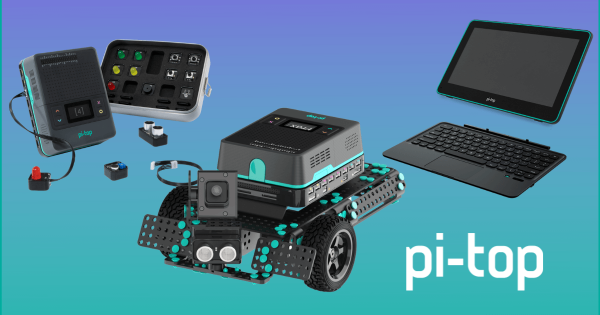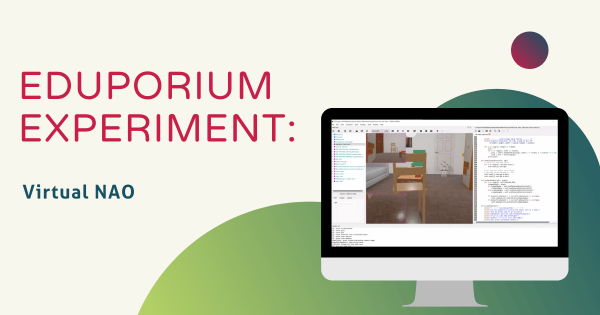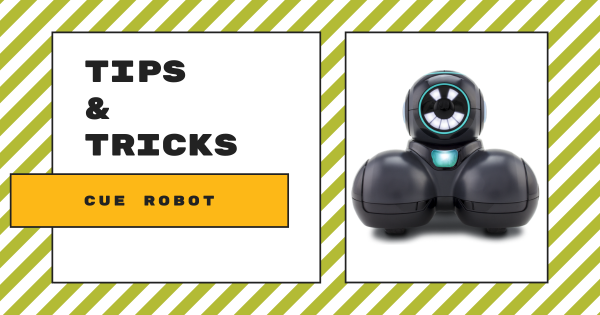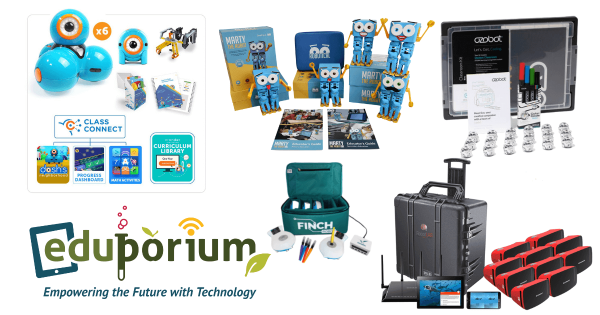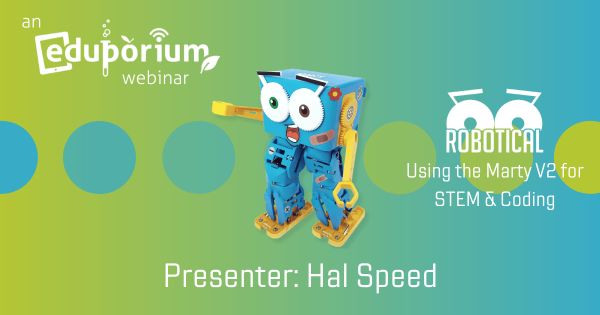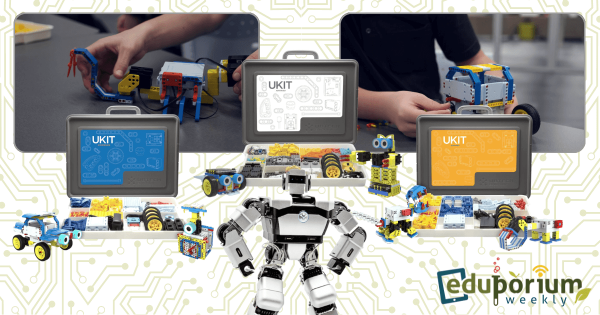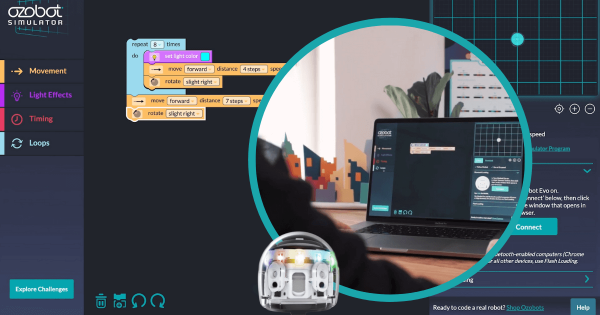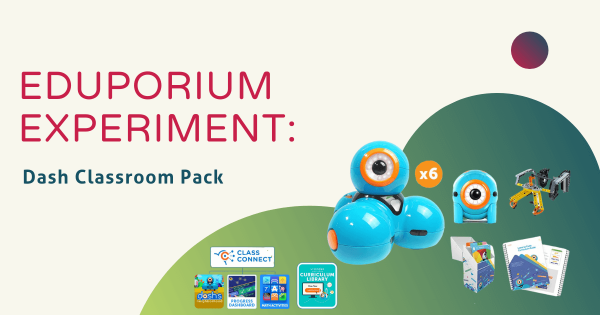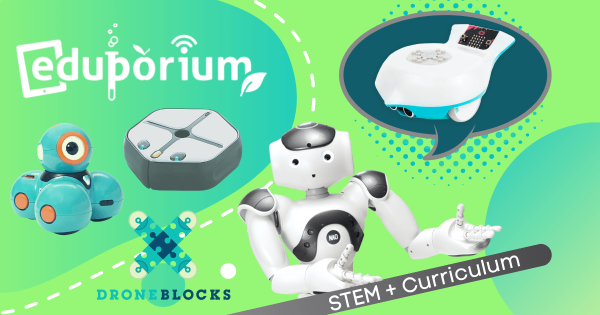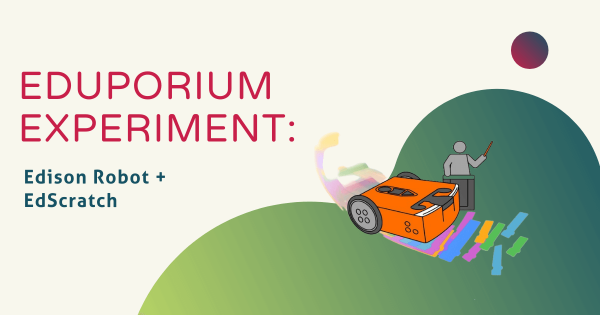Starting with the pi-top [4], this revamped DIY device empowers students to design, code, and create within the pi-top platform. It also helps them focus on exploring key physical computing concepts with a sprinkle of project-based learning along the way. Then, there’s the Robotics and Electronics Supersets for building and programming in deeper detail.
Robotics
Some of the most popular paths and effective approaches to preparing students for their future involve using robotics tools. A significant subsection of STEM education, coding robots and other types of programmable devices enable a large percentage of the STEAM learning that occurs in our schools. Using educational robotics tools, students from Pre-K to college can develop key coding skills. This is largely because, among these various robot kits, many are compatible with various programming languages. So, beginning in Pre-K, a child might use the Cubetto Robot in screen-free coding activities. Then, they might move on to the Bee-Bot or Blue-Bot for CS experiences that are slightly more complex. And, by the time they're in kindergarten or first grade, they have a legitimate foundation and they're ready to continue developing fluencies in coding, problem solving, and even computational thinking.
One reason robotics in education is so effective is due to various advances in robotics equipment for schools. Beyond introducing the absolute basics of coding early on (and without a screen), students can then progress to one of the most basic forms of coding, which you might know as Blockly. So many robotics tools incorporate the Blockly coding language along with their corresponding programming environment. In fact, the Ozobot Evo, Root Robot, Edison Robot, and Dash Robot are among the most popular elementary robotics tools. These help children build on coding and technology knowledge as they prepare for the next step—text programming. In text coding, they can use tools like the databot 2.0, NAO Robot, and most of the others we've mentioned. And, through these experiences, they can develop STEM skills in a tangible way while using robotics tools to do so.
-
Eduporium Experiment | Virtual NAO Robot
As we do more than ever to create equitable STEM education, we’ve really embraced coding lessons that students can access from everywhere. One robotics tool that enables this is that highly intelligent humanoid known as the NAO Robot V6 and, with the virtual version, students in middle school, high school, college, and CTE programs can code in any environment.
-
Tips & Tricks | The Cue Robot From Wonder Workshop
The Cue Robot is similar to the Wonder Workshop Dash Robot in its shape and functionality, but there certainly are some key differences between the two. Most notably, the Cue is better suited for teaching teenaged students since it’s a bit more complex. It also has more memory, a better processor, more advanced sensors, and a text-based JavaScript coding environment.
-
Classroom Packs: A Solution For Collaborative STEAM Learning
The class packs on our store—available for many top STEAM items across disciplines—come with everything teachers need, and they fit into different instructional formats. The components often include your main product—it is often around 6-30 units depending on the size of the bundle. Then, there are various accessories, like chargers, project guides, and teacher content.
-
Full Eduporium Webinar On The Marty V2 From Robotical
We joined Robotical’s Head of North America, Hal Speed, to talk about the Marty Robot V2. Beginning with its basics, Hal demonstrated how you can get started with these different coding environments and, in the replay, you can learn to insert the battery, how to program your Marty V2 in unplugged mode, and how to access the Marty Robot app. Watch the replay inside!
-
Eduporium Weekly | Get to Know the UBTECH Education Line
Each of the UBTECH Education robotics kits—Beginner, Intermediate, and Advanced—are very engaging for students, offering opportunities for hands-on engineering, coding, and problem-solving using the unique components and sensors. This week, we’re breaking down each of the kits, including what comes in the packages, the curriculum, and more.
-
The Ozobot Simulator Enables Coding Experiences Anywhere
The Ozobot simulator is accessible online through any modern browser. Whether they have an Ozobot robot with them or not, students can use the simulator to create and run programs. Especially with learning taking place in many different environments, this tool helps level the playing field and provides students with an accessible way to develop CS skills.
-
Eduporium Experiment | Dash Robot Classroom Pack
These class packs help ensure educators deliver efficient instruction, provide actionable feedback to students, and maximize the teaching potential of the Dash. Recently revamped, the latest Dash Classroom Packs are perfect for introductory coding lessons and continue to be an incredibly effective option for facilitating high-quality STEM lesson plans.
-
Eduporium Weekly | STEM Kits with Curriculum
Whether it’s robotics, circuitry, engineering, or something else, there are obviously a myriad of STEM solutions available to today’s K-12 teachers. With all these options, they often look for something to differentiate them and, regularly, that’s the curricular component. With the NAO V6, Dash Robot, Finch 2.0, and more, they can get those key guides included.
-
Eduporium Experiment | EdScratch + the Edison Robot
EdScratch is very user-friendly and designed for students as young as 10 years old. Students can use it to explore the more challenging aspects of coding, such as changing the input commands within blocks and setting their own values for distance, time, and speed. Also, whereas EdBlocks is icon-based, EdScratch enables hybrid coding with the Edison Robot.




